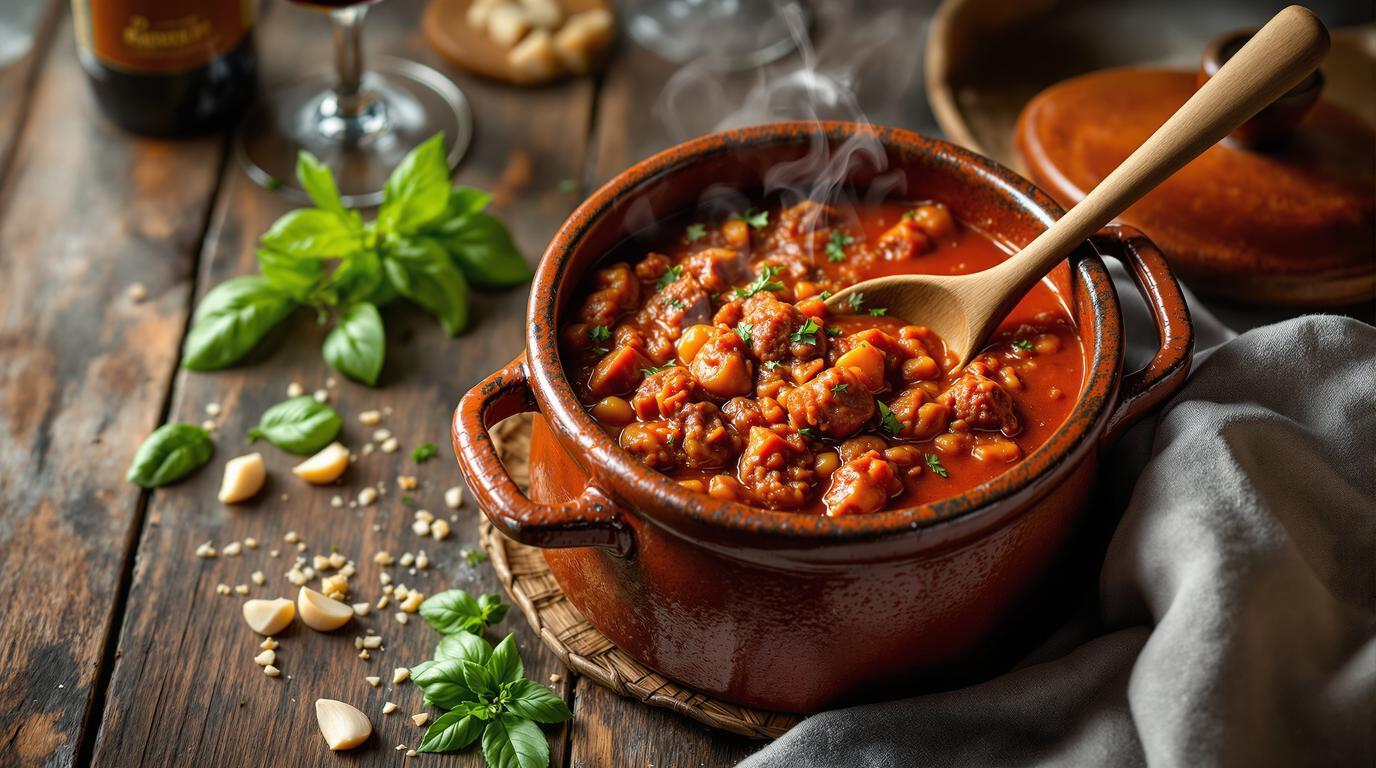Standing in my grandmother’s Sicilian kitchen years ago, I watched in awe as she transformed a simple bowl of fresh tomatoes into something magical. “The secret isn’t in what you add,” she whispered, leaning over her bubbling pot, “but in respecting what nature already gave you.” That lesson forever changed my approach to what Italians call ‘sugo di carne‘ – the hearty meat-tomato sauce that forms the backbone of countless Mediterranean classics. When I recreated her recipe at my restaurant in Barcelona, even skeptical locals were converted. This isn’t just sauce; it’s edible heritage that proves sometimes the most humble ingredients create the most profound flavors.
The Story Behind Nonna’s Meat-Tomato Sauce
Long before convenience foods existed, Italian grandmothers created these robust sauces as practical ways to stretch ingredients and nourish families. What began as necessity evolved into culinary artistry, with each family developing unique variations. The foundation remains consistent: fresh, ripe tomatoes, quality meat, and patience. Unlike quick-cooking alternatives, this sauce demands time – the slow simmer allows proteins to break down and flavors to concentrate into something far greater than its parts.
Ingredients Spotlight
The heart of this recipe lies in the tomatoes. While Mediterranean cuisines often rely on preserved ingredients, fresh tomatoes bring irreplaceable brightness. Choose plum varieties like Roma or San Marzano when possible – their dense flesh and minimal seeds create perfect sauce consistency.
- 2 lbs (900g) fresh plum tomatoes, blanched and peeled
- 1 lb (450g) ground beef (80/20 lean-to-fat ratio)
- 8 oz (225g) Italian sausage, casings removed
- 1 medium yellow onion, finely diced (about 1 cup)
- 4 garlic cloves, minced
- 2 tablespoons (30ml) olive oil
- 2 tablespoons tomato paste
- 1 cup (240ml) full-bodied red wine
- 1 bay leaf
- 1 tablespoon fresh basil, chopped (or 1 teaspoon dried)
- 1 teaspoon fresh oregano (or ½ teaspoon dried)
- ½ teaspoon red pepper flakes (optional)
- 1-2 teaspoons sugar (only if tomatoes lack sweetness)
- Salt and freshly ground black pepper to taste
Step-by-Step Guide
- Begin by blanching tomatoes: score an X on bottoms, submerge in boiling water for 30 seconds, transfer to ice bath, then peel and roughly chop.
- Heat olive oil in a heavy-bottomed Dutch oven over medium-high heat until shimmering.
- Add ground beef and sausage, breaking into small pieces. Brown thoroughly (about 8 minutes) – don’t rush this step as proper caramelization creates foundational flavor.
- Reduce heat to medium, add onions and cook until translucent (4-5 minutes).
- Add garlic and cook just until fragrant (30 seconds) – avoid browning which creates bitterness.
- Stir in tomato paste and cook for 2 minutes until it darkens slightly, intensifying umami notes.
- Deglaze with red wine, scraping all browned bits from pot bottom – these contain concentrated flavor.
- Add prepared tomatoes, herbs, spices, and bay leaf. Season judiciously with salt and pepper.
- Bring to gentle boil, then reduce to lowest possible simmer. Partially cover and cook for 2½-3 hours, stirring occasionally.
- Taste and adjust seasoning before serving. The sauce should have reduced by about a third.
Chef’s Note: If you’re short on time, this sauce will be acceptable after 45 minutes, but allowing it to simmer for the full duration transforms it entirely. The proteins break down, tomatoes sweeten naturally, and what begins as distinct components melds into something unified and profound. This is where grandmothers’ wisdom truly shines – they understood that patience yields excellence.
Expert Techniques
The difference between good and exceptional sauce lies in technique. When browning meat, resist the urge to stir constantly – allow it to develop a dark crust before breaking apart. This technique transforms tough proteins through proper Maillard reaction, creating hundreds of complex flavor compounds.
For tomatoes, blanching isn’t merely tradition – removing skins eliminates any potential bitterness while preserving bright acidity. If using peak-season tomatoes, their natural sweetness should suffice without added sugar. The slow reduction concentrates natural sugars and acids into perfect balance, similar to traditional risotto technique that coaxes maximum flavor from simple ingredients.
Presentation & Pairing Ideas
This versatile sauce shines beyond traditional pasta applications. Try it with herbed focaccia as a rustic dipping sauce, spoon over polenta for hearty comfort, or use as base for homemade pizza. For summer gatherings, serve alongside a watermelon feta salad – the contrast between rich sauce and bright salad creates beautiful balance.
The sauce develops even more character overnight, making it ideal for prepare-ahead entertaining. When reheating, add a splash of water or stock to maintain proper consistency. Freeze portions in ice cube trays for instant flavor bombs to enhance future dishes.
Remember, recipes are frameworks, not commandments. Make this sauce your own – add diced carrots for sweetness, mushrooms for earthiness, or pancetta for depth. What matters most isn’t strict adherence but understanding the principles behind why this technique has endured through generations. Cook with confidence, taste constantly, and you’ll create something truly memorable.
